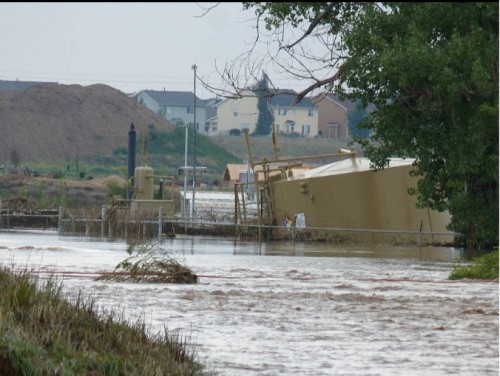Storage tanks are used for a large number of applications
and for storing various materials. Tanks
can be used to store water, oil, fracking chemicals, toxic material and so forth. The most typical configuration for a storage tank
is a cylinder, with a flat bottom, and vertical cylindrical walls. This cylindrical design is not the most
stable, but is susceptible to flooding, erosion, and subsequent spillage.
Recent flooding in Colorado has shown that cylindrical
storage tanks are not stable, but are vulnerable to flooding, erosion, toppling
and failure.
By contrast, a spherical tank is much more stable. A sphere does not have a top or bottom: it is
round and inherently much more stable than a cylinder. A sphere is not susceptible to erosion,
toppling, asymmetry, leaning or collapse in the same way a cylindrical tank
is. A sphere cannot be knocked over on
its side, because it is round. A high-strength spherical tank made from interlocking triangular concrete block woven together with steel cable or rebar is vastly superior to conventional cylindrical tanks.
This obvious feature of spherical geometry is so simple as
to be self-evident and would seem hardly worth pointing out. However, since cylindrical tanks are failing,
and have failed, and are likely to continue to fail, it is worth showing here
that a spherical storage tank is much more stable, inexpensive, easier to
assemble, more efficient and far safer than the conventional cylindrical tanks used
(especially by the oil and gas and fracking industries) which have shown their
instability and poor performance recently in Colorado.
While the recent flooding in Colorado is described as a 500
or 1,000 year event, it may cause people to think: “This won’t happen again for a long time, we
won’t have to worry about this sort of event for hundreds of years.” This attitude neglects the danger posed by
storm surges along coastal areas during hurricanes, and also neglects our changing
climate which is prone to additional flooding across the country and around the
world. For example, all the radioactive
toxic water stored at Fukushima is stored in cylindrical tanks: at the very
location where a tsunami could strike again, any time.






